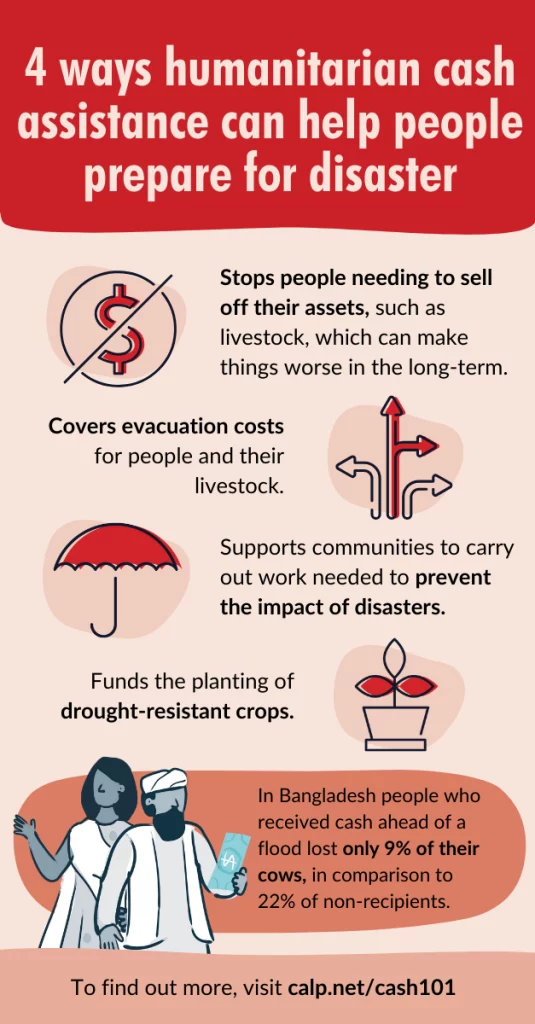Disaster preparedness: Planning for emergency cash and voucher assistance

What is disaster preparedness?
Disaster preparedness is a type of humanitarian assistance that helps people and communities prepare to respond and cope when a disaster, such as a flood or an earthquake, strikes.
In the right circumstances, Cash and Voucher Assistance (CVA) can be a useful tool to support disaster preparedness.
What is anticipatory action?
Anticipatory action is part of overall disaster risk management and preparedness. It involves taking steps to protect people before a known impending crisis, through a combination of risk analysis, early warning and/or forecasts, and pre-agreed financing. CVA can be used in anticipatory action to help reduce the impacts of a predicted event on homes, livelihoods, and health.
A good example of an anticipatory action programme is the “B-READY” programme, run by a consortium of organisations. B-READY (Building Resilient, Adaptive and Disaster-Ready Communities) takes a community designed approach, and as part of a range of actions, distributes pre-disaster cash grants. 9,300 individuals in the Philippines were reached in the first two years of the programme, and it this was then rolled out to Indonesia and Sudan.
How can cash and voucher assistance be used for disaster preparedness?
CVA can support disaster preparedness by enabling people to:
- Avoid sell off their assets.
- Cover evacuation costs of for themselves and their livestock in anticipation of extreme weather. Forecast-based financing cash transfers in Bangladesh found recipients lost only 9% of their cows in a flood event, in comparison to 22% of non-recipients.
- Stock- up on food in case of emergency.
- Invest in drought-resistant crops.
- Support communities to construct dikes, or clear and maintain drainage around their home to prevent the impact of floods
- Stock in-demand items if they are traders, to support markets and stabilise supply and prices.

Getting a CVA response ready to be rolled out
With good cash preparedness, cash payments can be sent to people affected by a crisis quickly and effectively on a large scale.
CALP’s Programme Quality Toolbox outlines the steps needed and tools that can be used to ensure CVA preparedness. These steps advise organisations to:
- Assess their capacity for CVA and invest in systems, procedures, and people to improve quality programming.
- Conduct CVA feasibility and risk analysis of CVA programmes.
- Analyse and monitor important markets in pre-crisis situations.
- Map and assess existing social protection programmes that could be utilised or linked to CVA programmes.
- Prepare to partner with appropriate Financial Service Providers (FSP) by agreeing and signing framework agreements in advance
- Assess the capacity of potential implementing partners
As noted in point 4, CVA can be linked to social protection systems ahead of a disaster. By building partnerships, understanding systems, and agreeing ways of working ahead of time – an effective response can be activated faster when needs arise.
Read more about CVA design and delivery on the Cash 101.
You can also refer to CALP’s ‘Organisational Cash Readiness Tool (OCRT)’ which advises how to strengthen organisational capacity for the design and delivery of cash and voucher assistance.